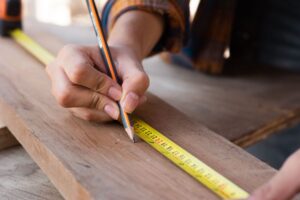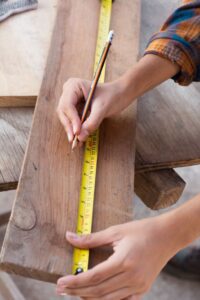To DIY a bathroom renovation, you’ll have to start by removing the bathroom fixtures. This should allow you to set up a new shower or tub and begin laying out the flooring you desire.
A clear bathroom will also allow you to hang plasterboards and start painting. From there, you can begin installing cabinets and the vanity.
In this post, we’ll discuss these steps in-depth so you can learn how to go through a DIY bathroom renovation on your own.
What Are the Steps to a DIY Bathroom Renovation?
The following are the main steps to a DIY bathroom renovation:
Take Out Bathroom Fixtures
If you’re planning to renovate your bathroom, whether it’s a partial or complete overhaul, the first step is to remove the plasterboard and any fixtures that you intend to replace. While gutting the bathroom yourself is not overly challenging, following essential tips is important to avoid costly errors.
- Consult a bathroom renovation plumber to isolate and make safe plumbing, like drain the toilet and remove, move pipes to new location
- Consult a licensed electrician to isolate power and rough in cabling to new location
- Remove the tiling back to the studs to allow for services to be relocated.
- Take out the vanity, cabinets, mirror, flooring, and any other features you plan to replace.

Install the New Tub or Shower
After gutting your bathroom, proceed with installing new fixtures. Replace any rotting wood or water-damaged subfloor before installing the new shower to prevent further issues. When choosing a shower or tub replacement, select a pan or basin that fits your desired decor and the available space.
Consider other bathroom features and the door location when choosing the base shape. Installing a combination shower and bathtub is an option if space allows.
Lay the New Flooring Materials
Once your subfloor is prepared, begin installing your new flooring. While tiles are commonly used in bathrooms, you can explore cost-effective and DIY-friendly options like laminate or vinyl.
Use chalk to mark perpendicular reference lines to ensure straight tile placement for tile installation.
Install Plaster and Begin Painting
The next phase of your bathroom renovation involves hanging new plasterboard, which requires careful cutting to fit around shower walls, vanity, and other features. Once you begin nailing up the boards, the process should proceed swiftly.
The following are some crucial tips to consider for DIY bathroom renovations:
- Cover seams and fill gaps with plasterboard mud and tape.
- Use cement board for shower/tub walls instead of standard plasterboard.
- After reassembling the walls, add a fresh touch by painting them. Opt for semi-gloss paint, which is mould-resistant and easy to clean.

Set Up Cabinets and Vanity
Once the walls are complete, it’s time to focus on the remaining items on your bathroom renovation checklist. Begin by installing the vanity, including the sink and faucet.
With the drain connected, proceed to other essentials like the mirror, cabinets, and trim around the shower or tub.
